-
 bitcoin
bitcoin $111743.690167 USD
0.54% -
 ethereum
ethereum $3950.699791 USD
0.55% -
 tether
tether $1.000164 USD
-0.01% -
 xrp
xrp $2.611685 USD
2.58% -
 bnb
bnb $1122.616845 USD
1.30% -
 solana
solana $193.462394 USD
-0.26% -
 usd-coin
usd-coin $0.999872 USD
-0.03% -
 dogecoin
dogecoin $0.196092 USD
-1.61% -
 tron
tron $0.296693 USD
-0.41% -
 cardano
cardano $0.652995 USD
-0.60% -
 hyperliquid
hyperliquid $44.316120 USD
12.98% -
 chainlink
chainlink $17.906269 USD
0.05% -
 ethena-usde
ethena-usde $0.999193 USD
-0.02% -
 stellar
stellar $0.326600 USD
1.70% -
 bitcoin-cash
bitcoin-cash $513.235984 USD
1.57%
What is a margin call in the context of SOL contracts?
A margin call in SOL contracts occurs when collateral drops below maintenance levels, risking liquidation if not addressed promptly.
Oct 19, 2025 at 10:01 am
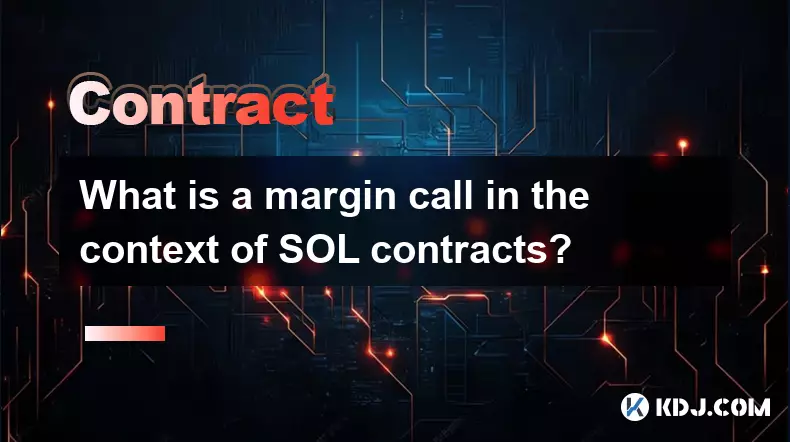
Understanding Margin Calls in SOL Contracts
1. A margin call occurs when the value of a trader’s collateral falls below the required maintenance threshold in a leveraged position involving Solana (SOL) futures or perpetual contracts. This typically happens during rapid price movements where the equity in the trading account cannot cover potential losses.
2. Trading platforms that offer leveraged exposure to SOL, such as derivatives exchanges built on or supporting Solana-based assets, require users to deposit collateral—usually in SOL or stablecoins—to open positions. If the market moves against the trader, unrealized losses reduce the account balance, triggering a margin requirement check.
3. When the margin level drops beneath a predefined ratio, the system issues a margin call, demanding additional funds or initiating liquidation if no action is taken. Some platforms notify users through alerts, while others automatically begin reducing the position to prevent further risk exposure.
4. Failure to meet a margin call usually results in partial or full liquidation of the position. Liquidation means the exchange forcibly closes the trade at current market rates, often at a loss for the trader, and may charge fees for the process.
5. The mechanics depend heavily on the exchange's risk engine and how it calculates mark prices, funding rates, and maintenance margins. On-chain protocols using SOL as collateral might also enforce similar mechanisms through smart contracts, removing human intervention from the process.
Risk Management Strategies Around Margin Requirements
1. Traders can avoid margin calls by using conservative leverage levels, even when higher multipliers are available. Limiting leverage reduces the sensitivity of the position to price swings, preserving collateral stability.
2. Monitoring open positions with real-time alerts helps traders respond quickly to adverse movements. Many traders set up price notifications or use third-party tools to track their health ratios across different exchanges.
3. Diversifying collateral types—such as using stablecoins instead of volatile assets like SOL—can provide more predictable margin performance. However, some platforms apply haircuts to certain assets, affecting effective collateral value.
4. Utilizing stop-loss orders allows automatic exits before reaching critical margin thresholds. These tools act as preemptive defenses, closing positions when losses hit predefined limits, thus avoiding forced liquidation.
5. Understanding the difference between isolated and cross-margin modes is essential. In isolated margin, only the allocated collateral is at risk. In cross-margin, the platform can pull from other holdings in the account to cover shortfalls, increasing both flexibility and exposure.
The Role of Volatility in SOL-Based Derivatives
1. Solana’s price history shows periods of high volatility due to network outages, ecosystem growth, or broader crypto market trends. Such fluctuations directly impact the likelihood of margin calls, especially during news-driven spikes or crashes.
2. High-frequency trading bots operating on decentralized exchanges contribute to sudden price dislocations. These micro-movements can trigger cascading liquidations if multiple leveraged positions are concentrated around similar price points.
3. Funding rates in perpetual contracts tied to SOL reflect demand imbalances between long and short positions. Extended periods of positive funding incentivize shorts, but they also increase rollover costs for leveraged longs, indirectly influencing margin usage.
4. Flash crashes—temporary plunges in price caused by thin order books or oracle lags—can erroneously trigger margin calls or liquidations. Some platforms have safeguards like price bands or TWAP (time-weighted average price) calculations to mitigate this risk.
5. Traders must account for slippage and execution speed when depositing additional margin during volatile conditions. Delays in blockchain confirmations or API latency can result in missed deadlines, leading to automatic position closures.
Liquidation Mechanics and Platform-Specific Rules
1. Each exchange defines its own liquidation engine behavior, including how much buffer exists between the margin call and actual closure. Some use an insurance fund to cover deep liquidations, while others rely on decentralized auction models.
2. Partial liquidation is becoming more common, where only a portion of the position is closed to bring the margin ratio back to acceptable levels. This preserves part of the trade in case of price reversals.
3. DeFi protocols leveraging SOL as collateral, such as lending platforms, employ over-collateralization requirements. If the value of deposited SOL drops significantly, users receive redemption notices before their assets are auctioned off.
4. Transparency in liquidation pricing matters. Certain platforms display the liquidation price directly on the trading interface, enabling users to anticipate danger zones and adjust positions proactively.
5. Post-liquidation penalties vary. Some exchanges charge a fee proportional to the position size, which is distributed to liquidators or added to risk reserves. These fees can significantly erode remaining equity after a margin call.
Frequently Asked Questions
What happens if I ignore a margin call on a SOL futures contract?Ignoring a margin call typically leads to automatic liquidation of your position. The exchange will close the trade at prevailing market rates, potentially resulting in a total loss of your initial margin and additional fees.
Can I use SOL tokens directly as margin on all trading platforms?Not all platforms accept native SOL as margin. While major exchanges support it, some require conversion into stablecoins or other accepted collateral forms. Always verify the acceptable asset list before opening a leveraged position.
How do decentralized exchanges handle margin calls differently than centralized ones?Decentralized exchanges often rely on automated smart contracts to enforce margin rules without human oversight. Liquidations are executed by bots or keepers who monitor health factors and trigger closures when thresholds are breached, sometimes offering rewards for participation.
Is there a way to get notified about approaching margin calls?Yes, most platforms provide email, SMS, or in-app alerts when your margin ratio approaches critical levels. Enabling these notifications and integrating them with external monitoring tools enhances responsiveness during fast-moving markets.
Disclaimer:info@kdj.com
The information provided is not trading advice. kdj.com does not assume any responsibility for any investments made based on the information provided in this article. Cryptocurrencies are highly volatile and it is highly recommended that you invest with caution after thorough research!
If you believe that the content used on this website infringes your copyright, please contact us immediately (info@kdj.com) and we will delete it promptly.
- Essex Post Office, 5p Coins, and King Charles: A Royal Mint Revelation!
- 2025-10-23 10:30:16
- Waymo's Newark Airport AV Tests: Alphabet's AI Gamble Pays Off?
- 2025-10-23 10:30:16
- King Charles 5p Coins: A Royal Flush in Your Pocket?
- 2025-10-23 10:35:18
- Solana, Crypto Advisory, and Forward Industries: A New York Minute on the Future of Finance
- 2025-10-23 08:51:22
- MAGACOIN: Ethereum Whales Dive into the Hottest Presale of 2025
- 2025-10-23 08:51:22
- Kadena's End of the Road? KDA Token Plummets Amid Project Abandonment
- 2025-10-23 08:55:34
Related knowledge
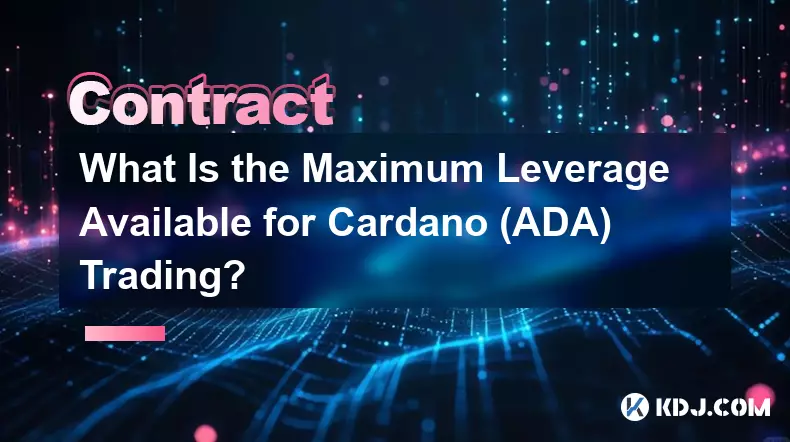
What Is the Maximum Leverage Available for Cardano (ADA) Trading?
Oct 26,2025 at 12:18pm
Understanding Leverage in Cardano (ADA) Trading1. Leverage allows traders to control a larger position using a smaller amount of capital. In the conte...

What Are the Fees Involved in Trading Solana (SOL) Perpetual Swaps?
Oct 26,2025 at 07:36am
Fees Structure in Solana Perpetual Swap Trading1. Trading perpetual swaps on Solana-based decentralized exchanges involves several types of fees that ...

How to Trade Ethereum (ETH) Breakouts with High Leverage Safely?
Oct 26,2025 at 02:19am
Understanding High Leverage in Ethereum Trading1. High leverage allows traders to control large positions with relatively small capital, amplifying bo...
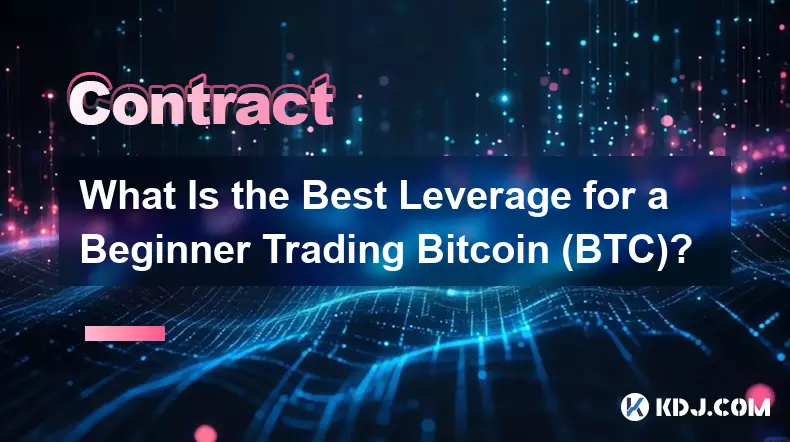
What Is the Best Leverage for a Beginner Trading Bitcoin (BTC)?
Oct 26,2025 at 07:00am
Understanding Leverage in Bitcoin Trading1. Leverage allows traders to borrow capital to increase the size of their trading positions beyond what thei...
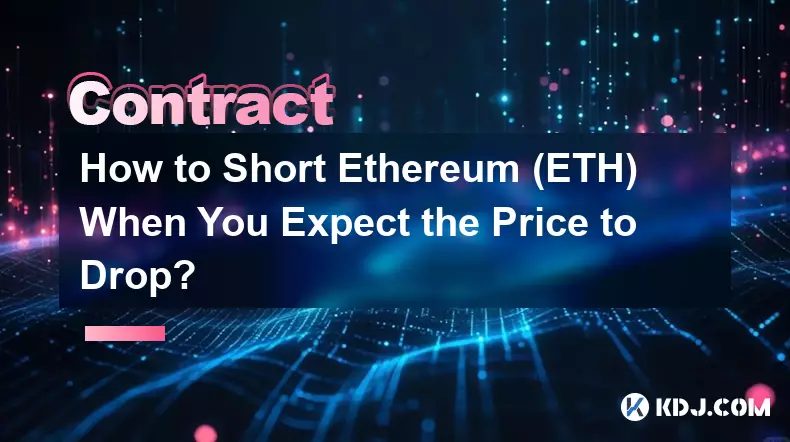
How to Short Ethereum (ETH) When You Expect the Price to Drop?
Oct 25,2025 at 05:18pm
Understanding Short Selling in the Cryptocurrency Market1. Short selling Ethereum means borrowing ETH and selling it at the current market price with ...
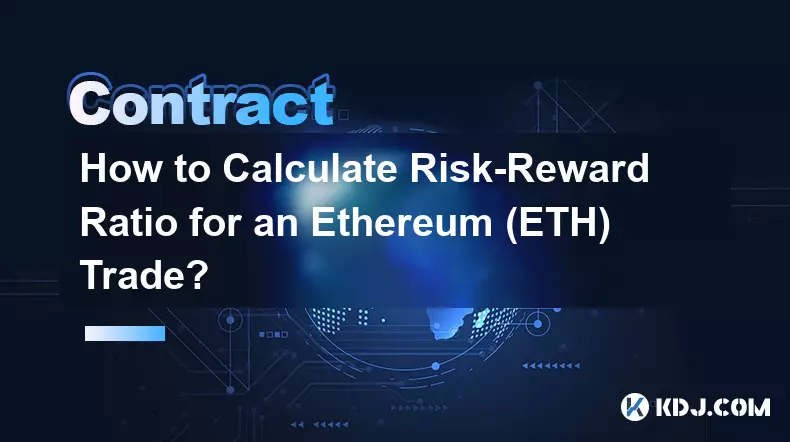
How to Calculate Risk-Reward Ratio for an Ethereum (ETH) Trade?
Oct 26,2025 at 09:55am
Understanding the Risk-Reward Ratio in Crypto TradingThe risk-reward ratio is a critical metric used by traders to evaluate the potential profitabilit...

What Is the Maximum Leverage Available for Cardano (ADA) Trading?
Oct 26,2025 at 12:18pm
Understanding Leverage in Cardano (ADA) Trading1. Leverage allows traders to control a larger position using a smaller amount of capital. In the conte...

What Are the Fees Involved in Trading Solana (SOL) Perpetual Swaps?
Oct 26,2025 at 07:36am
Fees Structure in Solana Perpetual Swap Trading1. Trading perpetual swaps on Solana-based decentralized exchanges involves several types of fees that ...

How to Trade Ethereum (ETH) Breakouts with High Leverage Safely?
Oct 26,2025 at 02:19am
Understanding High Leverage in Ethereum Trading1. High leverage allows traders to control large positions with relatively small capital, amplifying bo...

What Is the Best Leverage for a Beginner Trading Bitcoin (BTC)?
Oct 26,2025 at 07:00am
Understanding Leverage in Bitcoin Trading1. Leverage allows traders to borrow capital to increase the size of their trading positions beyond what thei...

How to Short Ethereum (ETH) When You Expect the Price to Drop?
Oct 25,2025 at 05:18pm
Understanding Short Selling in the Cryptocurrency Market1. Short selling Ethereum means borrowing ETH and selling it at the current market price with ...

How to Calculate Risk-Reward Ratio for an Ethereum (ETH) Trade?
Oct 26,2025 at 09:55am
Understanding the Risk-Reward Ratio in Crypto TradingThe risk-reward ratio is a critical metric used by traders to evaluate the potential profitabilit...
See all articles










































































